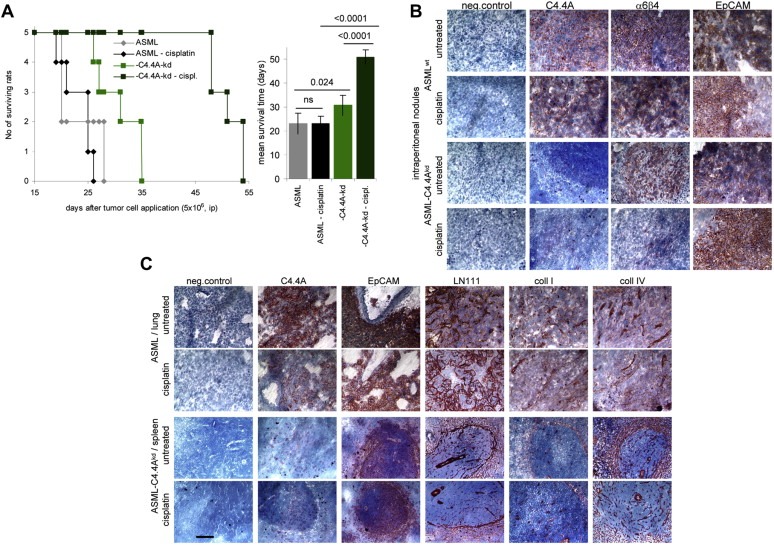Figure 4.

Impaired cisplatin resistance of ASML‐C4.4Akd cells: (A–C) BDX rats received ip 5 × 106 ASML or ASML‐C4.4Akd cells (clone 34c). After 2 and 23 days, they received cisplatin (1 μg/g body weight, ip). (A) Survival time and rate of 5 rats/group and the mean survival time; Significant differences between ASML‐ and ASML‐C4.4Akd‐bearing rats and between untreated and cisplatin‐treated rats are indicated. (B) Intraperitoneal tumor nodules were stained for the ASML markers C4.4A, 6 4 and EpCAM and (C) lung metastasis of untreated and cisplatin‐treated ASML and spleen metastases of untreated and cisplatin‐treated ASML‐C4.4Akd‐bearing rats were stained for C4.4A, EpCAM and the matrix proteins LN111, coll I and coll IV. Scale bar: 100 μm. ASML‐C4.4Akd cells respond better than ASML cells to cisplatin treatment. Notably, ip injected ASML‐C4.4Akd cells preferentially settle in spleen and liver, particularly in cisplatin‐treated rats, whereas ASML cells metastasize to the lung, irrespective of the injection site. Also distinct to ASML cells, surviving ASML‐C4.4Akd cells shield themselves from the surrounding tissue by a capsule mostly composed of LN111 and coll IV. Notably, too, particularly under cisplatin treatment, intraperitoneally grown ASML‐C4.4Akd cells reduce alpha6beta4 expression.
